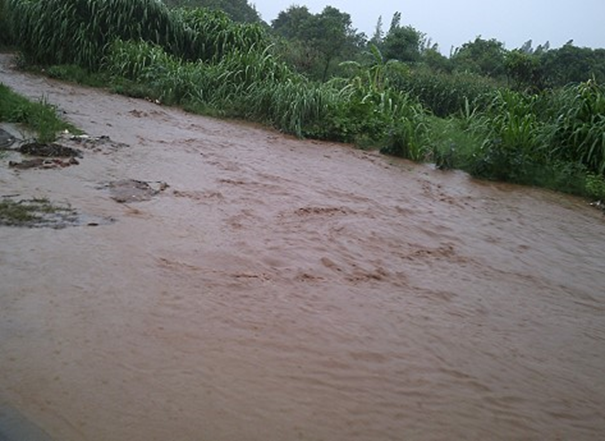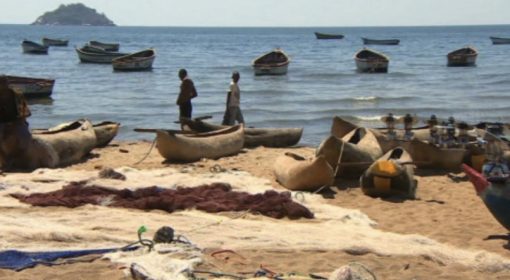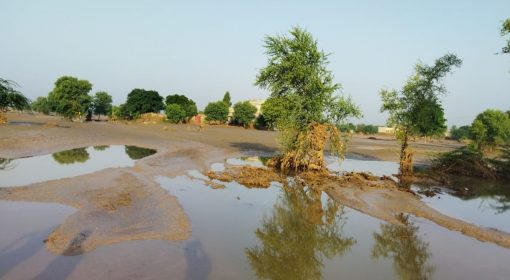by Macpherson Nthara, Flood Based Livelihoods Network Malawi
October 05, 2018
Climate change and its associated impacts continue to ravage Malawi, exacerbating poverty and raising doubts over the ability of the country to attain the recently adopted Sustainable Development Goals (SDGs). According to the United Nations Entity for Gender Equality and the Empowerment of Women, the country is losing 1.7 percent of its gross domestic product – about USD 22 million (MK 16 billion) – on average every year due to the combined effects of drought and floods.
Between 1967 and 2003, the country experienced six major droughts and 18 incidences of flooding, which heavily impacted smallholder farmers. Droughts in 2011-2012 had severe effects on food security in many districts, with approximately 2 million people affected – particularly in the south. The country has also only just recovered from extensive flooding that took place in 2015 and left many lives and livelihoods destroyed; it is estimated that 1,101,364 people were affected, with 230,000 displaced and 106 killed. In 2016, drought conditions occurred due to the strong El Nino. This resulted in extensive crop failures, affecting 2.8 million people.

Extensive Flooding in the Northern District of Karongs
Evolving risks
This combination of consecutive droughts mixed with heavy floods makes countries such as Malawi highly vulnerable to climate variability, which is only expected to worsen under a warmer climate future. Increases in the severity of extreme events such as floods and storms (due to rising temperatures and atmospheric moisture) will potentially further exacerbate the hazards faced. Malawi’s Department of Climate Change and Meteorological services (DCCMS) has warned that the country will continue to experience floods.
This year, the rains have been delayed. Rainfall can longer be predicted. Districts that have always experienced temperatures below 30˚C have had temperatures rising up to 40˚C. Each of these occurrences has been attributed to climate change – a man-made problem. Due to their high levels of historic greenhouse gas emissions from industry, developed countries are those most responsible for climate change. However, the effects of climate change are being heavily felt by developing countries like Malawi, which have little capacity to respond and adapt to such catastrophes.
Impacts are already being seen in the increasing levels of poverty among smallholder farmers, who mainly rely on agriculture for their livelihoods. However, it is not only rural livelihoods in Malawi that are being affected by the severe impacts on the agricultural sector; non-agricultural and urban households are also being impacted due to the strong production and price linkages between agriculture and the rest of the economy.
Climate and poverty
Annie Ganizani, 47, a subsistence farmer from Kandulu Village in Salima District, Central Malawi, has witnessed the impacts of climate change first-hand over the last decade.
“I was born into a family of subsistence farmers,” says Ganizani. “My parents failed to give me education due to, among other reasons, poverty. But when I got married and was blessed with some kids, I believed that through hard work, I would be able to educate my kids. Our leaders used to tell us there was no reason to worry as the land was indeed producing more than enough. Farming was a very promising occupation and the only hope for our uneducated community.”
Unfortunately, Ganizani’s dreams were shattered by the brutal effects of climate change.
“We first noticed that something was wrong around us after the year 2003, when the rainfall pattern changed. Unexpected floods, droughts, and dry spells became an annual occurrence,” she says. “The floods and dry spells quickly resulted in dwindling yields, leading to food shortages and subsequently taking us into extreme poverty.”
In 2004, heavy floods from the nearby Lifidzi River destroyed Ganizani’s village and farmland. “After the floods we moved to a new area, only to be given a smaller piece of land. We continue to harvest just enough to last us a few months.”
Now, 15 years after relocating to higher ground, Ganizani and her family are poorer that than they were in 2003.
“I do believe that climate change and poverty should be addressed together,” she says.
Lives and livelihoods
Although climate change has turned the lives of many Malawians upside down, and in spite of the government of Malawi and other organizations’ interventions, communities are continuing to indirectly contribute to climate change.
“Many people want to run away from poverty by cutting down trees for charcoal and cultivating along river banks, which in turn makes them vulnerable to floods and droughts,” says George Majawa, Chairman of the Kandulu Village Disaster Risk Management Committee (VDRMC).
Environmental District Officer for Salima, Davies Chogawana, concurs with Bwanali and says that efforts to address the impacts of climate change are continually challenged by local efforts to end poverty. “People still cut down trees wantonly, they still use charcoal on a large scale, and some of them still cultivate on river banks, triggering ever more floods and droughts,” says Chogawana.

Land degradation generating excess run-off, which leads to flooding
Communities in the flood-affected districts of Salima, Chikwawa, Machinga, and Dedza are heavily dependent on the environment and natural resources such as water, land, forests, and biodiversity for their livelihoods – as are most communities in the country. The enterprises involved include agriculture, charcoal burning, brick making, and other small-scale businesses that are mostly environmentally degrading. Unsustainable land-use practices and climate change exacerbates the effects of environmental degradation.
Assistant Disaster Risk Management Officer for Salima, Blessings Kamtema, says that it is unfortunate that not all victims of climate change related disasters have been reached by interventions. “Salima, one of the districts most hit by climate change in Malawi, has been receiving support from many organizations. However, these area-specific interventions might not have restored the livelihoods of all the people affected.”
While efforts by some local NGOs have yielded some benefits in helping communities affected by floods and other climate related disasters, there is room for further improvement. There need to be more concerted efforts towards the restoration of the affected communities’ livelihoods; this could be through the provision of agriculture inputs, the diversification of income-generating activities, and combining sustainable flood-preparedness and mitigation with basic development activities. This has the potential to reduce vulnerability, building the affected communities’ resilience to current floods and future disasters.
Early warnings
There is also need to strengthen the weaknesses exposed by the 2015 floods in flood forecasting and early warning systems. By strengthening these systems countrywide, relevant departments can coordinate and prepare for flooding – and communities are warned in advance. Monitoring the predicted increases in temperature and rainfall variability, as well as the ability to forecast these changes, is also a key capability that will allow Malawi to effectively adapt to the impacts of climate variability and change. In particular, daily and seasonal weather and climate information can be used by subsistence farmers to plan planting strategies, crop types, and the application of agricultural inputs, and by fishermen to navigate stormy weather and plan times and locations for drying fish. Similarly, information on impending floods, considering current environmental and social conditions as well as the expected and current rainfall across river catchments, enables preparedness activities, which are critical to reducing the vulnerability of communities and livelihoods at risk from flooding.
The government of Malawi with support from the UNDP has secured funding from the Green Climate Fund to scale up the use of modernised early warning systems and climate information in the country. The project will work with communities in food insecure districts to co-develop tailored weather and climate-based advisories to be disseminated through ICT/mobile, print, and radio channels. The project will also scale up best practices in community readiness to respond to disasters and mitigate key risks
Over 50 percent of Malawians live in poverty and around 80 percent of Malawians depend on farming for their livelihoods. Unless climate smart technologies are passed on to all smallholder farmers, the government goal of ending poverty by 2030 as committed to in the UN Sustainable Development Goals (2015-2030) will not be achieved. In the longer term, if poverty is not checked and alternative economic activities are not identified and put into practice, little progress will be made in creating climate change resilience within Malawian rural communities and allowing people to continue farming on their land.



